
All categories
Featured selections
Trade Assurance
Buyer Central
Help Center
Get the app
Become a supplier

(18274 products available)


































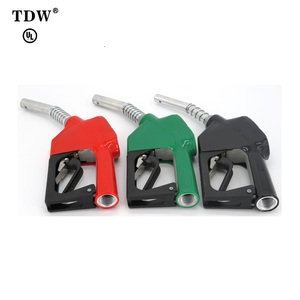
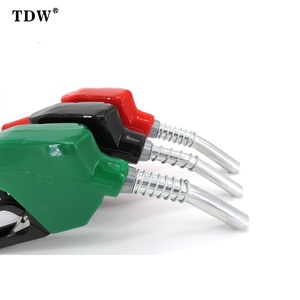

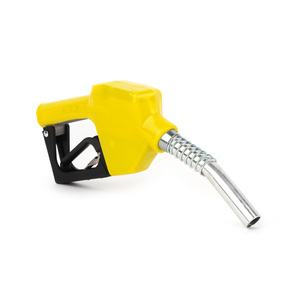
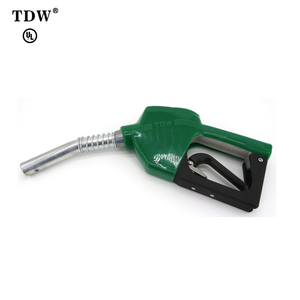
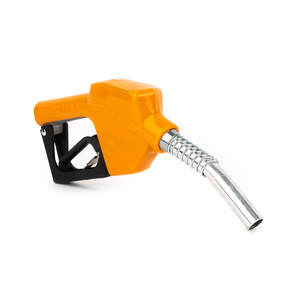











Petrol nozzles are devices attached to the end of the petrol gun that dispense petrol into vehicle tanks. The petrol nozzle is an essential component of the fuel dispensing system, allowing safe and accurate delivery of fuel to vehicles. There are different types of petrol nozzles, which include:
Automatic petrol nozzles:
Automatic petrol nozzles, also known as automatic shut-off nozzles, are designed with shut-off mechanisms that prevent fuel overfill into the vehicle tank. The nozzles come with a sensor that detects when the tank is full. When the tank is full, the sensor activates and shuts off the flow of fuel automatically. Consequently, automatic petrol nozzles enhance safety by preventing fuel spills and reducing the chances of fire hazards. Moreover, automatic petrol nozzles offer convenience to both customers and attendants, as they eliminate the need to constantly monitor fuel flow during dispensing.
Manual petrol nozzles:
Manual petrol nozzles are controlled manually by the operator or user. The flow of petrol through the nozzle is controlled using a lever or trigger, allowing the user to regulate the fuel flow according to their preference. Manual petrol nozzles are commonly used in smaller fuel stations and agricultural machinery. Additionally, manual petrol nozzles offer flexibility and precision control of fuel flow, making them suitable for specific applications where automatic control is unnecessary.
Swivel petrol nozzles:
Swivel petrol nozzles are designed with a swivel joint that allows the nozzle to rotate 360 degrees. As a result, users can easily direct the nozzle at different angles without twisting the hose. Swivel petrol nozzles prevent hose kinking and reduce wear and tear. Besides, they enhance convenience and flexibility during fuel dispensing, especially in tight spaces or when the vehicle's fuel filler is located in an awkward position.
Adblue nozzles:
Adblue is a diesel exhaust fluid (DEF) used in diesel-powered vehicles to reduce harmful emissions. Adblue nozzles are specifically designed to dispense Adblue into the vehicle's tank. The nozzles have smaller orifices and specific flow rates suitable for Adblue delivery. Additionally, Adblue nozzles are often equipped with anti-drip features to prevent Adblue spills and contamination of the surrounding area.
High-flow nozzles:
High-flow nozzles are designed to dispense fuel at higher flow rates, making them suitable for applications requiring rapid fuel transfer. For instance, high-flow nozzles are commonly used in commercial vehicles, agricultural equipment, and industrial machinery. The nozzles have larger orifices and advanced mechanisms that allow efficient fuel delivery while maintaining safety and accuracy. High-flow nozzles reduce fueling time and enhance productivity in fuel-intensive operations.
Manufacturers provide petrol nozzles in various specifications to meet different needs. Here are some common specs one will find:
Flow Rate
Each nozzle has a different flow rate, which determines the amount of fuel dispensed per minute. The flow rate is measured in liters per minute (LPM) or gallons per minute (GPM). Common flow rates are 20 LPM or 5 GPM.
Construction Material
The nozzle is an important component of the petrol gun and is made from various materials. Each material offers different benefits. For instance, metal alloys like aluminum and brass are corrosion-resistant. They also offer high strength and durability. One may also find nozzles made of plastic, which is lightweight and cheap.
Dispensing Pressure
The petrol nozzle is designed to operate under specific pressure limits. The dispensing pressure is measured in pounds per square inch (PSI). Common pressure values are 30 PSI or 200 kPa.
Safety Features
Petrol nozzles are equipped with various safety features. For instance, they have a hold-open clip that allows continuous fuel flow without the operator's hand being on the trigger. The clip is spring-loaded to close automatically when the trigger is released. The nozzle also has a vapor recovery system that prevents fuel vapor from escaping into the atmosphere.
Fitting Size
Petrol nozzles come in different sizes to fit various fuel hoses and tanks. The fitting size is usually specified in inches or millimeters. Common sizes are 1 inch (25 mm) or 3/4 inch (19 mm).
Maintaining petrol nozzles is crucial to ensure they function properly and last longer. Here are some maintenance tips:
Choosing the right petrol nozzle for a specific application requires careful consideration of several key factors:
Flow Rate:
The flow rate of a petrol nozzle must be compatible with the fueling requirements of the petrol engine. Higher flow rates are suitable for larger engines or commercial vehicles, while lower flow rates are more appropriate for smaller engines or personal vehicles.
Compatibility:
The petrol nozzle must be compatible with the existing fueling infrastructure, including underground storage tanks, piping systems, and fuel dispensers. Ensuring compatibility minimizes the risk of leaks, pressure drops, and system inefficiencies.
Safety Features:
Consider the safety features of the petrol nozzle, such as automatic shut-off valves, spill-free nozzles, and anti-static properties. These features minimize the risk of accidents, reduce product loss, and enhance overall fueling safety.
Ergonomics:
Evaluate the ergonomics of the petrol nozzle, including its weight, handle design, and ease of operation. A well-designed nozzle improves user comfort, reduces fatigue, and facilitates efficient fueling operations.
Material and Corrosion Resistance:
Consider the material composition of the petrol nozzle. Nozzles made from corrosion-resistant materials, such as stainless steel or certain alloys, offer durability and longevity, particularly in environments with exposure to harsh chemicals or weather conditions.
Maintenance and Serviceability:
Evaluate the maintenance requirements and serviceability of the petrol nozzle. Choose nozzles that are easy to disassemble, clean, and inspect, minimizing downtime and maintenance costs. Availability of spare parts and manufacturer support are also crucial considerations.
Environmental Considerations:
Take into account environmental considerations, such as emissions control and fuel vapor recovery. Selecting petrol nozzles with integrated vapor recovery systems or low-emission designs contributes to environmental sustainability and compliance with regulations.
Application-Specific Requirements:
Consider any application-specific requirements, such as special handling of alternative fuels, additives, or specific fuel quality parameters. Ensure that the chosen petrol nozzle meets these requirements to maintain fuel integrity and performance.
By carefully evaluating these factors, one can select the appropriate petrol nozzle that ensures efficient, safe, and reliable fueling operations while meeting specific requirements and industry standards.
Petrol pump nozzles are easy to replace. With the right tool, it is a one-person job. Here is a simple guide on how to replace a petrol nozzle:
Q1. Are there any standards for petrol nozzles?
A1. Yes, there are standards for petrol nozzles. In 2014, the International Organization for Standardization (ISO) published ISO 14469-1, which specifies the basic requirements and testing methods for petrol nozzles. This standard covers safety, performance, and environmental aspects. It also aims to facilitate trade and ensure compatibility between different countries' systems.
Q2. What materials are used to make petrol nozzles?
A2. Petrol nozzles are typically made from durable and corrosion-resistant materials such as aluminum, zinc, brass, and stainless steel. These materials can withstand the harsh environment of fuel handling and provide a long service life. Some nozzles also have plastic or composite parts to reduce weight and improve ergonomics.
Q3. How do automatic petrol nozzles work?
A3. Automatic petrol nozzles use a valve that closes when the tank is full. They also have a lever that is usually closed and a spray gun that has an automatic locking device. When fuel is required, the lever is depressed, and water flows through the nozzles. Once the tank is full, the valve closes, and the lever returns to the closed position, stopping the flow of fuel.
Q4. What is the difference between petrol and diesel nozzles?
A4. The main difference between petrol and diesel nozzles is their size and compatibility. Diesel nozzles are larger and have a wider opening to allow faster fuel transfer, while petrol nozzles are smaller to avoid exchanging fuels into incompatible vehicles. Also, diesel nozzles typically have a flap or insert that prevents their use on petrol engines, ensuring compatibility and preventing potential damage to petrol engines from diesel fuel.